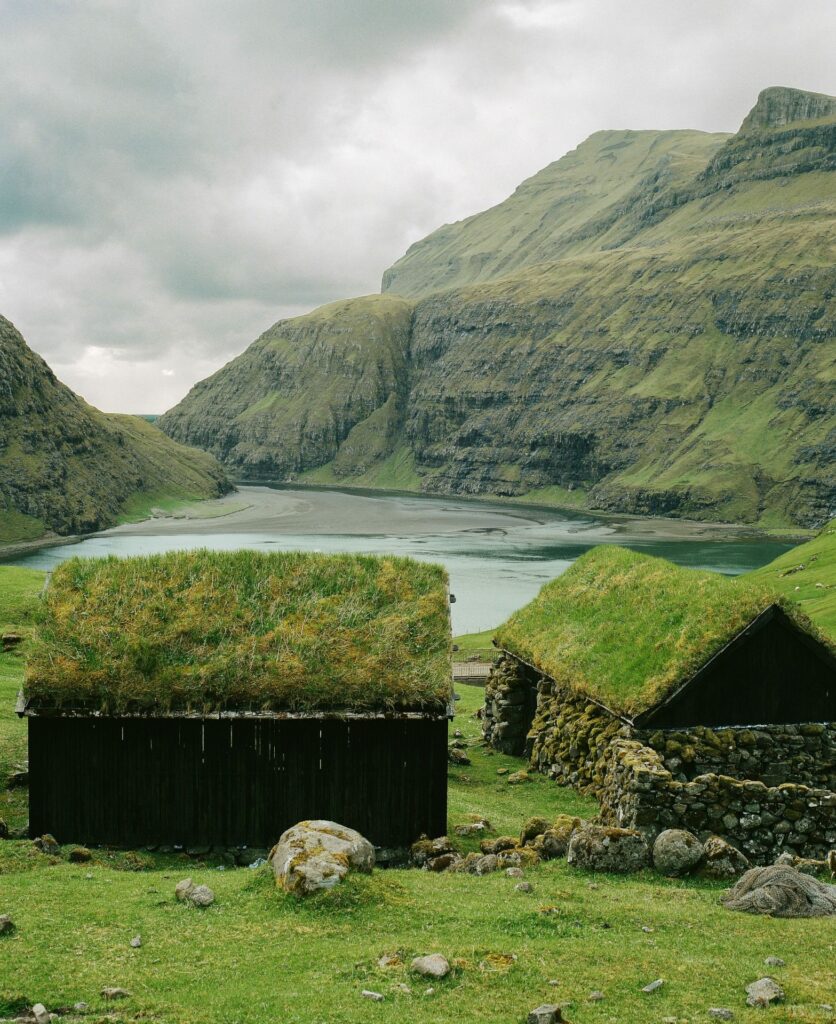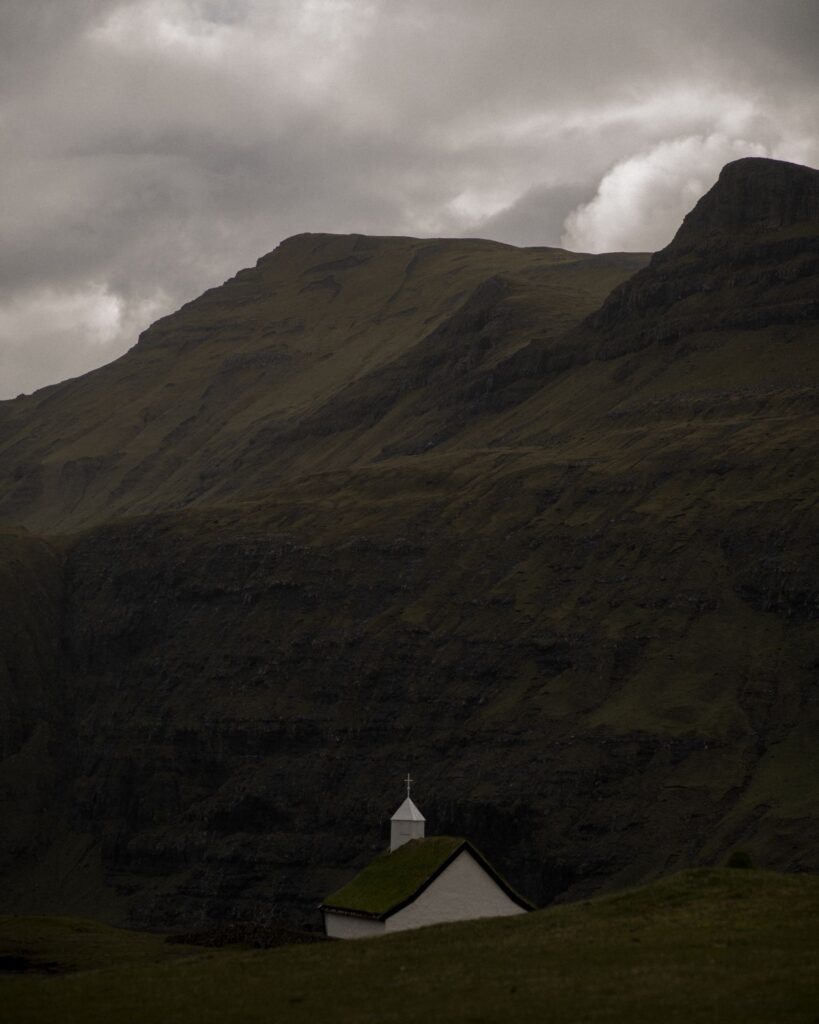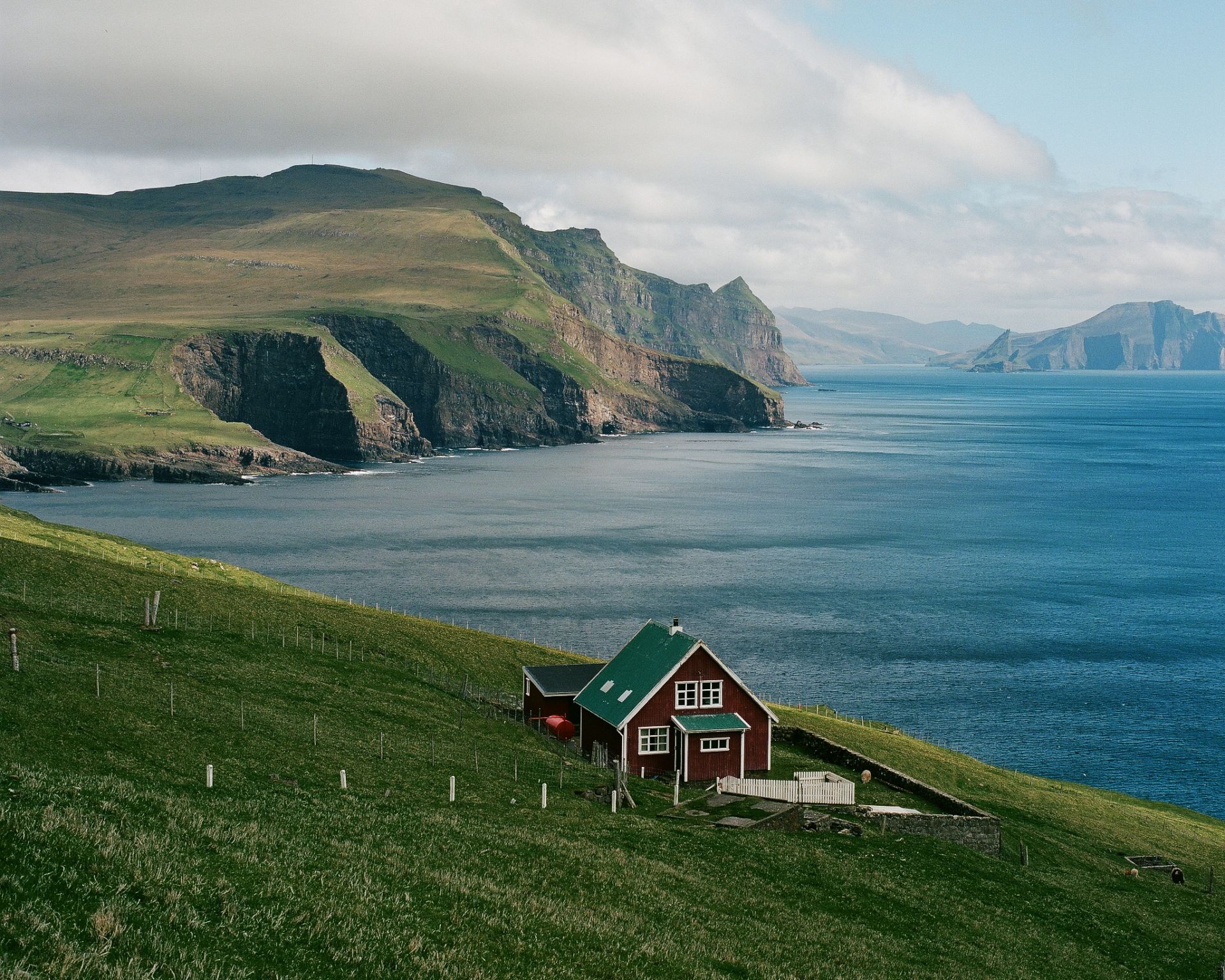It was a Saturday night in Torshavn, and the sole maternity ward in the Faeroe Islands was eerily quiet. Three women who had given birth earlier in the week were in their rooms, recovering from labor and getting to know their babies under the watchful eye of two midwives. But otherwise, the ward, whose worn interiors look a couple of decades out of date but whose windows open onto a redeeming expanse of sea and sky, was empty.
“It’s strange,” said midwife Lea Hoste. “We haven’t had a birth since Thursday.”
The midwives at the National Hospital of the Faeroe Islands are accustomed to the unpredictable tides of labor and delivery. But in this tiny country of 18 rocky islands that was, until recently, the only one in Europe whose population was still producing enough children to replace itself, it was hard not to see the lull as an indication of larger shifts. Was the Faeroe Islands, an autonomous nation within the Kingdom of Denmark that has long been Europe’s most fertile country, going the way of its Nordic neighbors? And if so, why?
Alarms about crashing fertility rates are going off around the world. Globally, live births have fallen from an average of 5 per woman of childbearing age in 1950 to 2.3 in 2021, according to the United Nations Population Fund. Significant drops have occurred within highly developed economies like Japan, South Korea and the United States. But nowhere has the decline been more dramatic than in Europe, where the average number of births per woman fell from 2.6 in 1964 to 1.4 in 1995. Since then, the rate has recovered a little ground, but at 1.53 in the European Union, it is stagnating well below the so-called replacement level of 2.1 (in which the population is producing enough offspring to maintain its level).
The reasons for this decline are complex and not fully understood. Most research has focused on a web of socioeconomic factors that cannot be easily disentangled, including urbanization, increased educational and employment opportunities for women and rising prosperity — all of which correlate with delayed childbearing and lower fecundity. But there are so many variables and exceptions that it is difficult to establish clear causality. Some researchers have also suggested that the focus on the socioeconomic aspect has obscured another possibility: that environmental factors may also be in play.

Perhaps nowhere is causality more difficult to determine than in the Nordic countries. Though they fell below the replacement level in the 1970s and have since mostly stayed there, fertility rates in Norway, Sweden, Finland, Iceland and Denmark remained higher than most other countries in Europe until about 2010. Because these same countries are also places with high GDPs and high rates of female participation in the labor market, many demographers concluded that the Nordic welfare state, with its generous parental leave and heavily subsidized daycare, was responsible for the higher than average birthrates.
Noting, for example, that women in the Nordic countries who bear their first child at a relatively older age still manage to “catch up” and have the same number of children on average as those who start younger, the demographer Gerda Neyer, a senior researcher at Stockholm University, points to family-friendly policies and the region’s emphasis on gender equality and work-life balance as explanations. “In countries that pursue those policies — the Nordic countries but also France — the number of children a woman has over her lifespan is still close to replacement level,” she says. “In countries that do not support women, fertility falls and remains low, especially if women’s education has increased — like in South Korea.”
In recent years, however, fertility rates in the region have been falling further and faster. At 1.74 for Iceland, 1.71 for Sweden, 1.7 for Denmark, 1.53 for Norway and 1.45 for Finland, they sit roughly in the middle of Europe’s numbers, which range from 1.86 in France to 1.14 in Malta. The Nordic countries still “have policies in place that are usually considered to support childbearing,” says Neyer. “So it’s a puzzle why fertility rates are declining. But they’re also declining with different welfare state and family-support policies, different gender regimes, employment regimes, cultural regimes.”
It seems, then, that other factors beyond strictly socioeconomic ones must be in play. Timothy Heleniak, a senior research fellow at the Stockholm-based research institute Nordregio, believes that welfare policies have likely not been inconsequential. “Without the parental leave policies in place, fertility rates may have fallen even further,” he says. But he also sees evidence of a shift in attitudes. “Concerns about climate change and not wanting to bring children into such a world are certainly a contributing factor. I think that overall uncertainty about the future, including economic uncertainty, contributes to people having fewer children.”
Neyer agrees. She notes that the fertility decline in Sweden and other Nordic countries is being driven by “something completely new”: cohabiting couples who choose not to become parents. “A more dire outlook — climate change, economic crises, the war in Ukraine, the Covid pandemic — has given rise to a perception of the future as uncertain, and this subjective perception seems to have a depressing effect on fertility. It is the imagination of an uncertain future and subjective perceptions of global risks that seem to make people hesitant to have children.”
In addition to socioeconomic conditions and collective anxiety, some scientists are investigating the hard realities of environment and biology. “I have noted that the media again and again mention that it is all due to the higher age of couples planning pregnancy,” says the physician Niels Erik Skakkebaek, professor of growth and reproduction at Rigshospital in Copenhagen. “But women 120 years ago on average had the same age at delivery as women today and the fertility rate then was as high as four,” he said, referring to statistics for Danish mothers overall, not just first-time ones. His research also shows that more Danish women in their 30s and 40s were able to carry their pregnancies to term in 1901 than they do today.
“The evidence that human fecundity, including semen quality, has declined is overwhelming,” he adds.
In other words, it’s not just that people are choosing to have fewer babies; their physical ability to conceive and carry them to term may well be diminished. “The fact that 10% of all Danish children now are born with assistance from fertility clinics is a clear sign that numerous young couples have low fecundity,” he says. Many of those have “mothers younger than 30 and the majority of mothers are below 35.”
Early in his career, Skakkebaek discovered testicular cancer precursor cells present in male fetuses (which suggests that testicular cancer in adult males may originate in the womb) and he continues to study the links between maternal exposure and male reproductive problems. In a recent article for Nature Reviews/Endocrinology, he and his co-authors argue that contrary to how it is commonly presented by demographers, fecundity in a population is not constant over time. Based on their and others’ research in Denmark, where fertility rates began to decline soon after industrialization, they hypothesize that exposure to chemicals originating from fossil fuels — even or especially during early gestation — may impair sperm or egg production later in life, and suggest that researchers seeking to understand the decline consider environmental factors alongside social and psychological ones.
All of these competing theories raise especially interesting questions in the Faeroe Islands, which had long held out; as recently as 2018, the fertility rate was 2.5. But in 2022, for the first time in history, it slipped below the replacement level.

On a Saturday morning early in summer, the light-filled living room of Sarah Ann Bjarnadottir Vinther’s home on the northside of Torshavn was the usual weekend crime scene of cereal bowls, unfinished puzzles and young requests for help getting dressed. Bjarnadottir Vinther was unperturbed; if anything, this was a quiet morning, as one of her four kids, all of whom are under the age of 8, was spending the night at her mother’s house. But she is also well accustomed to the chaos of a large family: Not only was her father one of five children and her grandmother one of “many,” both Sarah Ann and her husband, Thomas, each have three siblings of their own. Some of those siblings also have four kids, as does one of Bjarnadottir Vinther’s best friends. Her other close friends have three each, but “they’re not finished yet,” she laughs. “So I guess it just seems natural. I don’t think ‘Oh, four kids, that’s a lot.’”
There are other anomalies that make the Faeroe Islands stand out. Countries with higher birthrates tend to have lower GDP, but the Faeroe Islands’ is higher than that of any other Nordic nation except oil-rich Norway. The unemployment rate is low, and 89% of Faeroese aged 16 to 64 are in the workplace — the highest proportion in Europe. And while it is relatively common for rural and remote areas to have higher birthrates, the Faeroe Islands easily outpace the neighboring — and also remote — Scottish archipelagos of Shetland (1.6) and Orkney (1.4) in the U.K.
“We’ve been expecting it to fall for a long time now,” says Kari Holm Johannesen, head of the statistics department at Hagstova, the Faeroe Islands statistics authority. “But it held on.”
Certainly, policy has helped support the Faeroe Islands’ larger families. Parents receive a year of paid leave with each child, and daycare and kindergartens are heavily subsidized — Bjarnadottir Vinther and her husband pay 3,000 kroner ($450) per month for the first child and nothing for the rest. Pregnant women who live on parts of the archipelago that aren’t connected by bridge or tunnel to Streymoy island, where the capital and National Hospital are located, are housed free in nearby apartments starting two weeks before their due dates. There’s even a tax break for seven-seater cars. But many of these benefits are comparable to those offered in Denmark and Sweden, which have much lower fertility. In its exceptionalism, then, the Faeroe Islands has long held out the tantalizing possibility of other explanations.
Strong social networks are one of them, creating an amalgamation of best practices in modern-day family-friendly public policy and the old adage about taking a village to raise a child. Investment in public projects like the long underwater tunnel that connects the island of Vagar — home to the country’s international airport and some of the archipelago’s most spectacular scenery — with Streymoy has also helped. “Here extended families live in close proximity to each other,” says Holm Johannesen, “unlike in other places where parents live in one city, their adult kids in another. And the infrastructure in Faeroes has really improved so the distance between villages is down dramatically. Today, several villages can function more like a single city.”
Bjarnadottir Vinther’s family is a case in point. Their home is in Hoyvik, which was once an independent town but is now part of Torshavn municipality. It’s a short drive from there to the city center where Sarah Ann works as a public prosecutor and Thomas as a bank advisor. Both their jobs are full-time (Thomas recently completed a law degree as well) and they occasionally rely on Sarah Ann’s parents, who live around the corner. “It’s not like they help on a daily basis,” she says. “But if I’m busy at work for a longer time than I expect or we really need help, they’re always there.”
That kind of network has also come in handy for Asa Danjalsdottir. She too comes from a large family; her mother was one of eight children, most of whom had at least four kids. (“When my grandparents were alive, they would have family get-togethers, and we could easily get up to 80 people,” she recalls.) She and her husband (one of four siblings) have four of their own, who range in age from 6 to 14. The youngest of those has Down syndrome and requires extra care, so Danjalsdottir has cut her time as a caseworker in the family law administration down to 20 hours a week. Her parents have been a godsend. “They babysit, and before he died, my father was very good about picking up the kids at school and driving them to and from every activity.” A lot of her friends who have built new homes have added an extra apartment for their parents to live in. “That way they always have a babysitter close by.”
In a country with more sheep (70,000) than people (53,000), the Faeroese like to joke that they make so many babies because there’s not a lot else to do. But the sparseness of the population in relation to the amount of land may also be a factor. Homes in the Faeroe Islands — including the traditional turf-roofed ones — tend to be grouped together but, even so, there’s plenty of space for everyone.
“Houses are bigger here; it’s not like Copenhagen where everyone is crowded into an apartment,” says Holm Johannesen. “Logistically, there’s just more space.” And not just space in the building itself: The volcanic islands have little traffic and a lot of nature, so there’s plenty of room outdoors for kids to roam as well. “All of this is ours,” Bjarnadottir Vinther says, gesturing out the window to a verdant yard bordered by other comfortable houses. “The kids can just run around; they go to the neighbors on their own to play. In Copenhagen, it’s always, ‘Watch out for cars; stay close.’ If we lived there I would never have had four kids.”

If social networks and logistics have long helped inure the Faeroe Islands to drops in fertility, they have not made the country entirely impervious. After remaining steady at two and a half children for most of the 21st century, the Faeroes’ fertility rate began falling in 2019 and, by 2022, had plummeted below the replacement level to 2.05. This drop came despite the fact that the population of women of child-bearing age has increased steadily since 2014.
What’s going on? Once again, no one is quite sure. Later this year, the demographers at Hagstova will begin research into whether the recent influx to the islands of non-Faeroese workers drawn by the burgeoning tourist industry are driving down overall reproduction rates. Contaminants may also be playing a role.
“There is an enormous need for environmental research to look at exposure from diet and air pollution,” Skakkebaek says. “There are many reports that fish can contain a number of endocrine-disrupting chemicals.”
So too can a certain mammal. Communally hunted and distributed, then consumed fresh in steaks and stews or air cured, whale has historically been important in both the Faeroese diet and culture. But the meat and the blubber contain high levels of mercury, which has been proven to have adverse effects on fetal neurological development. In research he published in 2012, Professor Pal Weihe, chief physician at the Faeroese Department of Occupational Medicine and Public Health, expanded a recommendation that had previously been directed only at pregnant women, suggesting “that pilot whale no longer be used for human consumption.” But any conclusions about whale meat’s possible contribution to fertility decline remain to be proven. And, of course, fertility rates have also declined dramatically in countries that do not consume whale.
So far, the drop in births in the Faeroe Islands has been offset by migration, and the size of the overall population continues to slowly increase (in 2022, it reached 53,090). The same is true for the rest of the Nordic countries: Deaths outpace births, but immigration ensures the population continues to grow. Yet “it is deviations from replacement-level fertility that have the largest impact on population change,” Nordregio’s Heleniak warns, and although he suggests that concerns over diminishing populations may be exaggerated in the Nordics, they are not, he says, misplaced. “A continued fertility decline will certainly lead to population aging,” he explains. “The welfare model rests on high employment rates and a large share of people of working age contributing to the tax base. If there are significant increases in the relative size of the older cohorts, this could put strains on the model.”
Beyond the social impact, Skakkebaek also perceives a more existential threat for humanity, which is why he and his co-authors end their study with a potential policy recommendation.
“If the fertility problems are, at least partly, due to anthropogenic activities (such as air and water pollution) that are causing increased environmental exposure to harmful chemicals, decisive regulatory actions,” they write, “will be needed to reverse the trends.”
At the maternity ward in Torshavn, none of the midwives who meet up early on Sunday morning for the shift change expresses that kind of concern. But they have noticed that things are generally slower now than they used to be. Pulling out the book where a handwritten record of each birth is kept, Lea Hoste does a quick calculation. “So far this year there have been 287 babies born. This time last year, there were 312. And the year before that, there were 337.”
After a 12-hour shift, her colleague Joan Niclassen was looking forward to heading home to her own two children. (“People here often ask me where the rest of them are,” she joked.) But asked why Faeroese women have more children on average than elsewhere in Europe, she was happy to stick around a little longer to talk. Like other Faeroese interviewed for this story, she described a tradition of strong family connections.
“It’s easier when you have that kind of support,” she said. “I think it would be very lonely to have a baby in Denmark.”
Sign up to our mailing list to receive our stories in your inbox.



